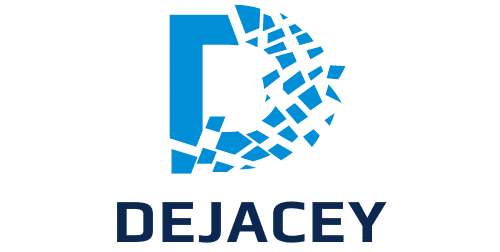How Can Continuous Glucose Monitoring Inform Diet and Performance in Endurance Athletes?

Glucose is the primary source of energy for your body. It fuels everything from your brain’s synapses to your muscles’ contractions. But for endurance athletes, this simple sugar isn’t just energy — it’s the pivotal factor between winning a race or barely finishing. It’s no wonder that many athletes have turned to continuous glucose monitoring (CGM) devices to optimise their performance.
In an era where data is king, these devices provide real-time glucose levels, offering invaluable insights into how diet, training, and other factors affect blood glucose and, ultimately, athletic performance. Let’s delve into the mechanics of glucose, CGMs and how these can be tools for fine-tuning sports nutrition and enhancing endurance performance.
Avez-vous vu cela : What Is the Impact of Altitude on the Performance of Drone Racing Pilots?
The Role of Glucose in Endurance Sports
Everybody needs glucose to function, but for endurance athletes, the stakes are higher. During prolonged exercise, your body relies heavily on carbohydrates (CHO) for energy. CHO is broken down into glucose, which is then used to produce energy.
CGMs provide a continuous readout of glucose levels, which can be useful for athletes in real-time during training or competition. This can help athletes identify if their current CHO intake is sufficient or if they need to adjust their nutrition strategy.
A voir aussi : What’s the Best Method to Improve Tactical Creativity in Soccer Team Managers?
Understanding the role of glucose in endurance sports is not just about understanding science. Ask any seasoned athlete, and he’ll tell you that managing glucose levels is also an art. It’s about finding the right balance of CHO intake, timing of meals and snacks, and how these coincide with training loads and intensities.
Understanding Continuous Glucose Monitoring (CGM)
A CGM is a device that provides real-time glucose readings, allowing users to monitor their blood glucose levels around the clock. This technology has been a game-changer in the management of diabetes, but recently, it’s gained popularity among athletes, particularly endurance athletes.
A CGM consists of a small, wearable sensor placed under the skin. It measures glucose levels in the tissue fluids also known as interstitial fluid. These measurements are then sent to a display device, such as your smartphone, providing you with real-time data on your glucose levels.
Armed with this information, athletes can gain insights into their personal glucose range and how various factors such as diet, exercise, stress, and even sleep can impact their glucose levels. This can help them make informed decisions about their sports nutrition and training plans.
How CGM Can Inform Diet and Performance
Using a CGM, athletes can observe how their bodies respond to different types of food, their timing, and the quantity. This can help them tailor their nutrition plan to suit their specific needs.
For instance, if an athlete notices a sharp drop in glucose levels during a long run, they may need to consume more CHO before and during the exercise. Similarly, if their glucose levels spike after consuming a particular food, they might decide to limit that food in their diet.
CGMs can also help athletes understand how their training affects their glucose levels. For instance, they may notice that their glucose levels drop after a high-intensity workout. Such insights can help athletes adjust their training and nutrition plans to ensure optimal glucose levels and, by extension, better performance.
Importantly, monitoring glucose levels can also help athletes identify and manage hypoglycemia (low blood glucose), a common problem in endurance sports. By identifying what’s causing hypoglycemia, athletes can make necessary changes to their diet and training plan to prevent it.
Leveraging CGM Data for Endurance Training
The benefits of CGM go beyond informing diet and preventing hypoglycemia. The continuous data provided by CGMs can also be used to inform training strategies.
For instance, an athlete might notice that their glucose levels tend to dip in the afternoon. They could then schedule their most demanding workouts for the morning when their glucose levels are typically higher. Conversely, if an athlete finds that their glucose levels are stable overnight, they might opt for early morning workouts.
CGMs can also inform post-workout recovery strategies. For example, if an athlete notices that their glucose levels dip after a workout, they might need to consume more CHO to replenish their glycogen stores.
CGM: Transforming Sports Nutrition and Performance
In the world of sports and nutrition, the saying "Knowledge is power" rings true. The more you know about your body, the better you can tailor your diet and training to your specific needs.
That’s where tools like CGMs come in. By providing real-time, continuous data on glucose levels, CGMs are giving endurance athletes a deeper understanding of their bodies. With this information in hand, athletes can optimize their sports nutrition to fuel their bodies, enhance their performance, and unlock their full potential.
In summary, whether you’re an elite athlete or an ambitious amateur, monitoring your glucose levels with a CGM can provide valuable insights into your body’s response to diet and exercise. These insights can then be used to inform your sports nutrition and training strategies, helping you reach your performance goals. The future of sports nutrition is here, and it’s powered by data.
Of course, as with any technology, it’s essential to remember that CGM is not a magic bullet. It’s a tool that provides data, which athletes must interpret and use correctly. Therefore, athletes should always work with sports nutrition professionals and coaches to effectively integrate CGM data into their nutrition and training plans.
The Science and Research Behind the Use of CGMs in Sports Nutrition
Scientific evidence supports the use of continuous glucose monitoring (CGMs) in optimizing sports nutrition and performance. Numerous studies available on Google Scholar, PubMed, and other scholarly databases have demonstrated the potential of CGMs to help endurance athletes maintain optimal blood sugar levels for peak performance.
Research articles published in PMC Free, for instance, have highlighted how CGMs can help athletes to understand their body’s response to different types of foods and training regimens. These insights can then be used to tailor their CHO intake and overall nutrition plan.
Moreover, the use of CGMs can also help to prevent hypoglycemia, a common issue in endurance sports that can severely hamper performance. Hypoglycemia occurs when blood glucose levels drop too low, and the body doesn’t have enough energy to function properly. Since CGMs provide real-time data on blood sugar levels, athletes can identify when they’re at risk of hypoglycemia and take appropriate action, such as consuming more CHO.
In another study available in PMC Free and DOI PubMed, researchers found a link between fluctuations in glucose concentration and energy availability in endurance athletes. The study suggests that maintaining stable glucose levels can ensure consistent energy availability, which is crucial for sustaining performance during prolonged periods of physical activity.
Despite these promising results, it is important to remember that the use of CGMs in sports nutrition is a relatively new field, and further research is needed to fully understand the potential benefits and limitations of this technology.
Conclusion: The Future of Sports Nutrition is Here, Powered by Data
In conclusion, continuous glucose monitoring (CGMs) offer a promising new tool for endurance athletes looking to optimize their performance. By providing real-time data on blood glucose levels, CGMs can help athletes to better understand their body’s response to diet and exercise, enabling them to tailor their nutrition and training strategies for peak performance.
However, the use of CGMs requires careful interpretation of data. Athletes should work closely with sports nutrition professionals and coaches to make the most of this technology. On its own, a CGM is just a device that provides data. The real value lies in how this data is interpreted and used. By combining CGM data with expert advice, athletes can unlock a powerful new tool in their quest for excellence in endurance sports.
While the use of CGMs in sports nutrition is still a relatively new field, the future looks promising. As technology continues to evolve, and as more research is conducted, the potential of CGMs to transform sports nutrition is becoming increasingly clear. And with this transformation comes a new era in sports performance – one that’s powered by data. In the words of the great Albert Einstein, "The measure of intelligence is the ability to change." With the insights provided by CGMs, athletes have a powerful new tool to adapt, evolve, and achieve their performance goals.
Remember, Continuous Glucose Monitoring is not a magic bullet, but a powerful tool that, when used correctly, can help endurance athletes to optimize their nutrition, prevent hypoglycemia, and ultimately, enhance their performance. The future of sports nutrition is here, and it’s powered by data.
